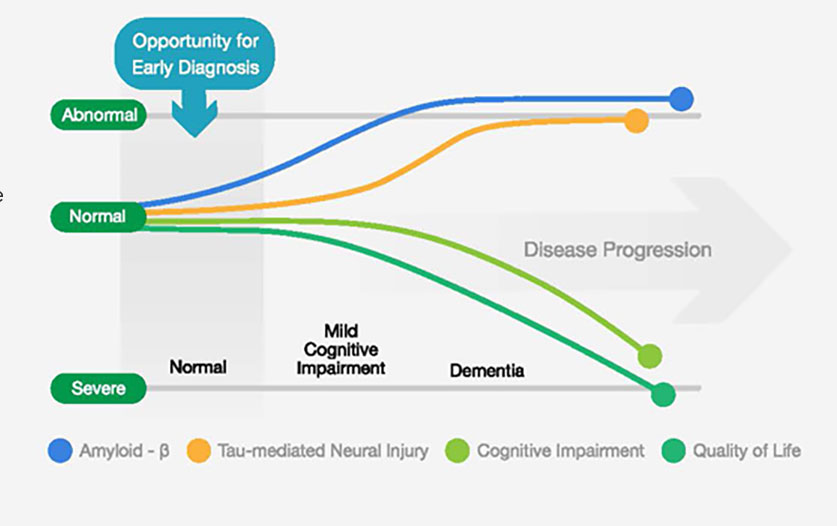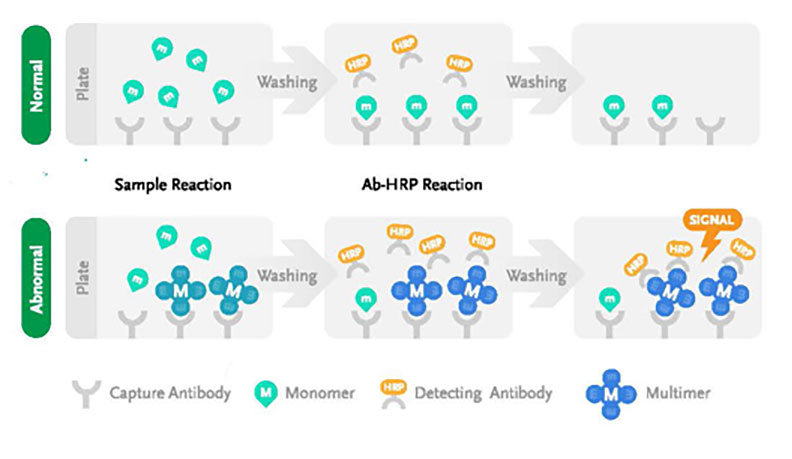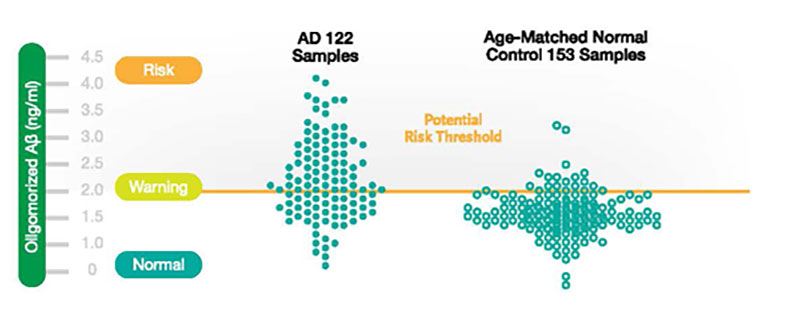
Enhancing Diagnosis in Alzheimer’s Disease:
MDS-AD Blood Test for detecting and measuring Oligomerized Beta-Amyloid

Alzheimer’s Disease:
A Global Epidemic
Chances are, someone you know will be affected by Alzheimer’s disease.
Alzheimer’s disease (AD) is the most common cause of dementia. It is a debilitating disease that progressively deteriorates memory and cognition, AD is overwhelming not only for those living with it, but also for their loved ones.
Early detection and intervention can significantly slow progression, preserving functional status and quality of life for a longer period.2
Currently, definitive diagnosis of AD can only be made at autopsy by linking clinical measures with the presence of beta-amyloid plaques and neuro-fibrillary tangles.
There is an unmet need for a simple, affordable blood test that may help detect and distinguish between AD and other causes of memory loss.
–
The Impact of Dementia1

A new case of dementia is diagnose every 3 seconds.

Today, nearly 47 million people
are living with dementia . By 2050, that number will nearly triple to 131.5 million.

By 2018, the total estimated worldwide cost of dementia will be $1 trillion. The cost is expected to rise to 52 trillion by 2030.
The estimated number of people (in millions) living with dementia in each region of the world in 2015:

Role of Beta-Amyloid in AD
Beta-amyloid (Aβ) plays a critical role in the neuropathology of AD. Although early studies suggested that Aβ plaques were the cause of nerve cell toxity in AD, researches now believe that oligomerized Aβ may be more toxic.3
Stages of Beta-Amyloid Aggregation4

1 Alzheimer’s Disease International. World Alzheimer Report 2015. 2 Leifer BP. Early diagnosis of Alzheimer’s disease: clinical and economic benefits. 3 Alzheimer’s Association. Beta amyloid and the amyloid hypothesis. Updated March 2017. 4 Hardy JA, Higgins GA. Alzheimer’s disease: the amyloid cascade hypothesis. Science. 992;256(5054):184-185.
Value of Measuring Oligomerized Beta-Amyloid
increases in Aβ levels precede cognitive impairment and are correlated with progressive cognitive decline and a decrease in quality of life 5 & 6. Ability to detect increase in Aβ levels represents an opportunity for screening and early diagnosis.
5 Murphy MP, LeVine H. Alzheimer’s disease and the β-amyloid peptide.
J Alzheimers Dis. 2010;19(1):311. 6 Masters CL, et al. Alzheimer’s disease. Nat Rev Dis Primers. 2015;1:15056.

Introducing MDS-AD Blood Test
The MDS-AD Blood Test detects oligomerized Aβ using PeopleBio’s propietary Multimer detection System, a sandwich assay using capture antibodies and epitope-overlapping detection antibodies for reliable and reproductible detection of Aβ oligomers or multimers7 .
How MDS-AD works

MDS-AD Blood Detects OAβ in AD

Advantages of MDS-AD Blood Test
- Simple blood test
- Suitable for first-line test
- Reproducible results
- Cost-affordable
CSF Biomaker
- CSF sample obtain by lumber puncture, which is invasive and burdensome to repeat
- Variability in results by test center8
Amyloid PET Imaging
- Access and availability may be limited
- High cost may be prohibitive
7 PeopleBio. Data on file. 8 Mattson N. CSF biomakers in neurodegenerative diseases. Clin Chem Lab Med. 2011;49(3):345-352.
